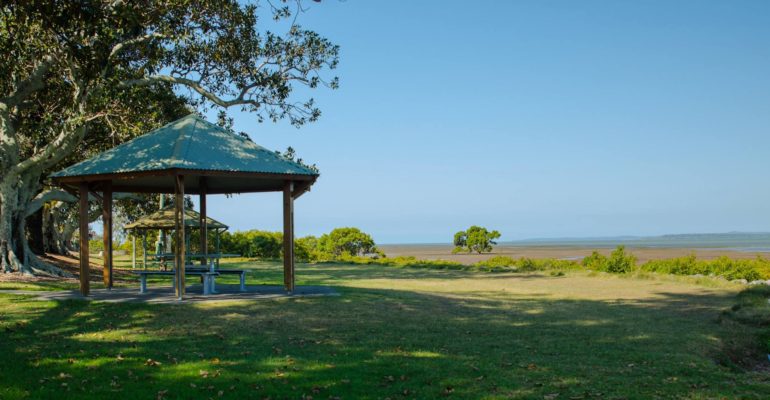
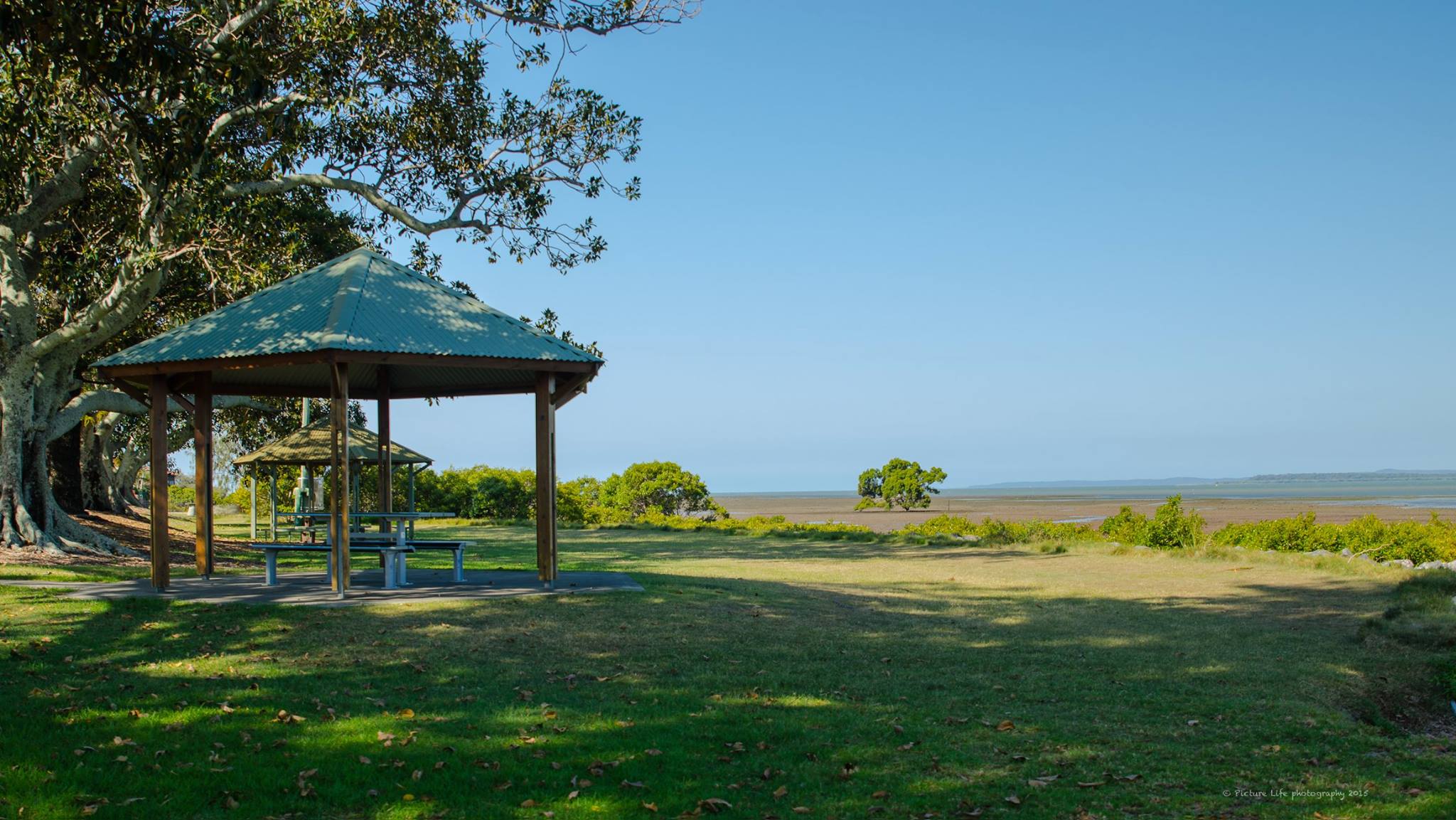
G.J. Walter Park – Photo by Picture Life Photography
I write to express my concerns about the Toondah Harbour development. I do not live in the Redlands. I was born in Cleveland in 1958 and lived there until 1973. I returned to Cleveland with my family in 1996 and moved to Brisbane in 2008. I now contemplate returning to Cleveland to retire.
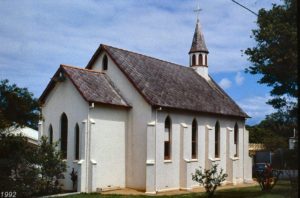
St Paul’s Church is listed on the Queensland Heritage Register – Photo: Heritage Branch
I visit G.J. Walter Park (GJWP) almost on a weekly basis. It is a place where I feel a strong sense of attachment; a place to which I have returned over and over for the past fifty years. The reasons are hard to define having built up layer upon layer over the years – the experiences, the visual memories, kinaesthetic movement through the place, its smell and feel.
It’s the feeling of turning the corner under the dappled shade of the trees near St Paul’s, driving the road to the park, breathing in the warm air coming off the sea, taking in the glinting sea stretching to the islands, listening to waves lapping and washing, watching the birds and feeling the sand, mud and water between my toes. Geographers refer to this as ‘a sense of place’ or ‘place identity’ – whereby places develop meaning and become endowed with value through the steady accretion of sentiment and experience (Tuan).
I also visit GJWP as an escape because I now live in West End where rampant development makes a mockery of Brisbane City Council planning requirements resulting in development fatigue and a much degraded quality of life for residents. The search for sites with potential value (i.e. where a buck can be made) is relentless!
Natural places close to urban areas are important
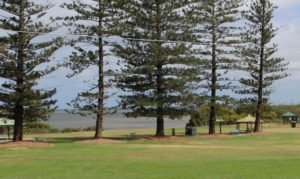
Shade under the Norfolk pines
On the face of it GJWP is not pretty or grand but an ordinary place with ordinary delights and it is its ordinariness that makes it so very special. It is not an unblemished or wild landscape but one that has been lightly developed, albeit clumsily, over the years with designated spaces that are ordered and organised by purpose.
Its shade under the Moreton Bay figs and Norfolk pines, its breezes, its quietude, its disordered edges and its open space attract visitors. Natural places close to urban areas are important places where people can temporarily remove themselves from everyday life and use their senses in a natural setting. At GJWP people do their thing without the traffic, the crowds and the espresso machines!
The Mayor has stated that her ‘vision’ for the Toondah area is a Southbank or a Sutton’s Beach or similar development. The undeveloped edges and open spaces of the area are under threat. It’s a familiar story that starts with a ‘vision’; yet there are many words that can describe a vision such as faulty, impaired, dull and short-sighted.
Vision is such a grand term meaning ‘the ability to think about or plan the future with imagination or wisdom’. Imagination and wisdom are two qualities that developers and councils appear to lack. Their boring, predictable, mass-produced products replace open space and farmlands and build out (and over) coastlines where views can be purchased and where every place looks like every other place.
Is there a template that councils and developers pass around? The VISION FOR….. Even the most casual observer could write the schema by inserting the following buzz words: economic development, prosperity, flow on effects, jobs, jobs, jobs, local jobs, world class, precinct, green, revitalise, accessibility, enhance, mixed use, sustainable, ecological, shared use, habitat, impact, capital, value added, etc.
Invariably there are no future plans in the scheme for five to ten years after completion (sustainability!) when the development is no longer shiny, the glitz and glamour worn away. Perhaps in the case of the Toondah development, eroded by familiarity, baked by the sun, pounded by storms, winds and king tides; eclipsed by newer, shinier developments; when cash-strapped council and state government are no longer interested. The environment, mangroves, the mud flats, the breeding and feeding grounds forever impacted.
Opportunities and opportunists
It seems as though developers and councils cannot leave open areas alone. In their view natural resources exist for their exploitation, like every other precious resource, and need to earn their keep.
A simplistic equation invariably arises where the cost of improved amenities such a ‘port’ at Toondah Harbour, a term used by the Mayor, requires off-setting by the economic return promised by the development of a large mixed use precinct. This type of thinking means that if an area is not a ‘precinct’ it is nothing, nowhere – just an opportunity waiting for an opportunist. Does every thing and every place need to be defined by economics as having quantitative market value to be exploited for big money purposes?
During Steve Austin’s ABC morning show broadcast from Cleveland on February 29 2016, the Mayor’s choice of words when putting the case for the Toondah project was revealingly disingenuous. Whenever the Mayor said she welcomed the views of ‘other people’ it was quickly followed by a ‘but at the end of the day’ or similar statement. Environmental concerns were described as ‘environmental hurdles’ – presumably to leap over or manage away. Opponents were framed as angry and inflexible, blocking development and standing in the way of job creation.
Proponents of the scheme fail to acknowledge that the scale of the project is unsatisfactory and differs wildly from the proposal on which the community was consulted; the ecological sensitivity of the site; and the views of well-credentialed experts.
The Mayor stated the Council is a business and should be run like a business. Councils are elected by residents to provide services and if this can’t be done without overreach and selling off the area’s natural heritage then perhaps the greatest service some councillors can provide for the local community and the broader community is to not stand for election.
Helen Hall
Published by Redlands2030 – 9 March 2016
Further information about Toondah Harbour
Queensland residents can sign an on-line parliamentary petition calling for the Government to withdraw it plans for development int he Toondah Harbour Priority Development Area and start again through a full and proper consultation process. The petition closes soon, on 16 March.
Community Alert: Toondah Harbour
Environmental impact assessment of Toondah Harbour development plans
History of the Toondah PDA Consultation
Election material authorised by S. MacDonald, 104 Channel Street Cleveland
Please note: Offensive or off-topic comments will be deleted. If offended by any published comment please email thereporter@redlands2030.net
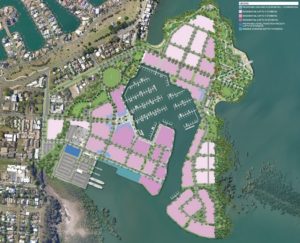
Cannot wait for Toondah Develepment to help our businesses grow, people in high rises spend. FACT,
Helen
You have captured beautifully the concerns of many people, RCC residents and non-residents alike. The current proposal for ‘development’ on this site is simply the wrong thing in the wrong place. And the way Mayor Williams and her ‘team’ have trashed the views of locals and experts alike is utterly shameful. Hopefully the election will see a more balanced set of Mayor and Councilors take office who understand their duty to ratepayers and the environment.
Thank you Helen Hall for capturing the very essence of WHY we seek and enjoy our natural foreshore areas.
I lived in Redlands for 25 years and I have recently moved to inner Brisbane and the cost of living in an inner city environment is a quarter of the cost compared to living in the Redlands. I would be for urban development if it would save rate payers money, fix road congestion between Redlands and Brisbane and deliver an efficient working public transport system.
Seriously folks, which industry, that is going to offer the right jobs for the low skilled unemployed we have now? Much less start up here in a city whose access roads are clogged now? How are they going to get their raw materials in and finished products out efficiently and economically?
So much for the snow storm claims of increasing jobs and economic prosperity except in internal service jobs i.e. lawn mowing, retail, service trades real estate sales you get the picture.
As for the source of this $100 million well….In essence it boils down to is we are banking on projected savings on monies from developers fees to sully our environment, future risks for liability, to provide what?…. choke point easing created by these over development!
Does anyone with any real understanding of business that all these or even a majority of construction jobs are going to:
a. The unemployed Redlanders?
b. the School leavers ?
Does anyone believe that the raw materials are going to be sourced from Redlander suppliers? The answer to the above is No .
The fast food outlets might get some of the business. Is that who the Mayor thinking of cheap temporary fast food teen jobs? whoopee that will fix our un and under employment issues I’m sure!
In previous comments I’ve pointed to the insurance risks to premium payers and to the council, climate change consequences and history of Other Redland marinas sinking etc.
This project makes absolutely no real City planning for the future sense at all.
So far I’ve avoided the ‘bald denial’ that we’re in the 1948 and that the environment is irrelevant to the well-being and or health of the local residents.
It’s time these ex farmers children started to realize the reality is that exponential growth in a finite
environment is an oxymoron. Stop trying to parley your grand parents/ parents land into a short cut gold pass to a life of the profligate rich. This mayor and acolytes are living proof that they are simply parasites and will be readily forgotten.
Who really cares or knows the people whose names are on parks, roads or plaques on buildings.
Now a great teacher lives on well after the children have grown up.
Helen Hall, you have clearly expressed what I have been thinking. In my opinion, shorelines should have buffer zones where no development, except for essential infrastructure (such as ferry terminals and access for boats) is allowed. There is no valid reason to create a building site by dumping dredge spoil in the sea and by so doing destroy sensitive eco-systems. Was this Toondah Harbour plan devised simply as a cheap way of disposing of dredge spoil created during the necessary upgrading of the ferry terminal?